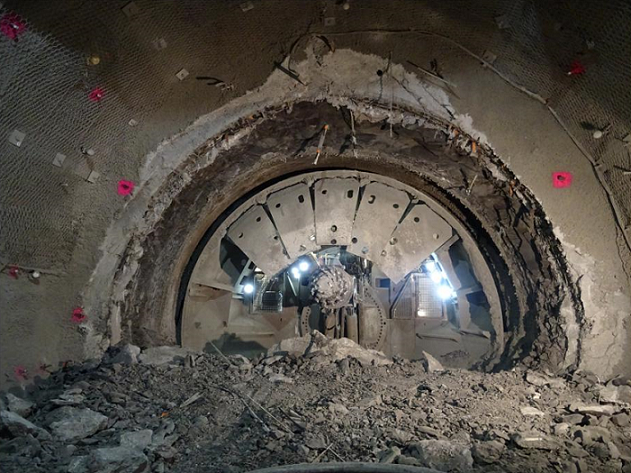For the Cigéo project, TERRASOL has been commissioned by Andra (French National Agency for the Management of Radioactive Waste) to develop an engineering approach for the design of tunnel segments with compressible material planned to be used as the internal structure for the galleries and cavities that will be excavated in the Callovo-Oxfordian layer, a geological formation with deferred behaviour, for future deep geological facilities for the disposal of radioactive waste.
The study initially focused on an exhaustive analysis of the measurements provided by the Meuse/Haute-Marne underground research laboratory (LSMHM) and in particular, measurements taken from the GRD4 gallery that was excavated with a road header TBM in 2013.
The analysis of 4 years of measurements taken by the sensors installed within the argillite and segments, enabled to adjust the computation model developed with FLAC numerical modelling code in order to model the construction of the gallery and the behaviour of the whole system during the first years. An extrapolation to 100 years was then produced using different sets of calculation parameters to evaluate the sensitivity of the results and the robustness of the proposed design for several excavation diameters, structure orientations and excavation methods (Tunnel Boring Machine or traditional method).
In 2018, TERRASOL is continuing these design studies on compressible material segments as part of a new assignment applied to the access galleries leading to high-level waste cavities. Additional thermal loading caused by the packages will be taken into consideration.
At the same time, TERRASOL is carrying out geotechnical supervision of galleries excavations at the LSMHM Laboratory for Eiffage.
Terrasol’s achievements
- Design studies
- Geotechnical supervision of galleries excavations
- Use of FLAC software (including thermal loading)
 Agent Access
Agent Access 




